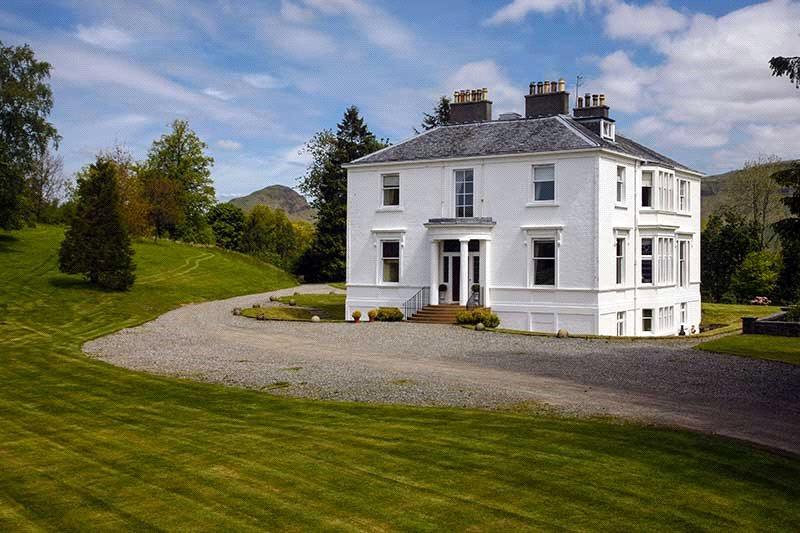THE COACHMAN'S DAUGHTER-MORRIN GENEALOGY EXPLORATION
I have wondered since I started genealogy searches on my spouse's family about MAURICE and MARION MORRIN naming their first child Sarah Wallis Smith.
Initially, being new to genealogy, I wondered if it would be because of the traditional naming conventions in Scotland but, based on what I know of the previous generations on both Maurice's and Marion's side, that would appear to possibly not be the case. There were no Sarahs, Wallises or Smiths in the previous generations that I have found.
This got me then searching for someone named
Sarah Wallis Smith. Lo and behold, I found a Sarah Wallis who married
William Smith in 1829 (Glasgow). This Sarah Wallis was apparently born in
County Cork, Ireland in 1797. She was the 2nd wife of William Smith and
had 6 children. Sarah seems to come from a family of money and, looking
back at her ancestry, appears to have English and Scottish ancestry, although
she was born in Ireland. 4 of the children of William and Sarah were born
in Govan, Glasgow, while the last 2 were born at an estate called Carbeth
Guthrie in Stirlingshire. Sarah Wallis Smith died in 1877 and is buried
in Strathblane, Stirlingshire.
William Smith appears to have been fairly
wealthy. He is listed in several places that I googled as a West Indies
Merchant and plantation owner. His business partner was a Robert Brown.
William Smith inherited an estate called Carbeth from his cousin (a man
with the last name of Guthrie) in 1834 and renamed the estate Carbeth Guthrie.
William was also Dean of Guild (a prominent position in Glasgow) in the
1810s and in 1822/1823 he was Lord Provost (equivalent of Mayor) of the City of
Glasgow. The estate of Carbeth Guthrie is in Stirlingshire.
Sarah Wallis was the daughter of Henry Wallis of Marysborough and the grand-daughter of Henry Wallis of Drishane, County Cork, Ireland.
Interesting points which have lead me to think
that Maurice and Marion named their first child after Sarah Wallis Smith:
1. Their daughter, born in 1854, was
born in Strathblane (which you may have noticed above is where the other Sarah
is buried);
2. William Smith's business partner, a
Robert Brown, is listed as coming from Fairlie, Scotland. Fairlie was
apparently known as "the best village of the wealthy in Scotland".
3. Marion Gilchrist's parish when the
banns were read in 1853 when she married Maurice was Largs. The village
of Fairlie is in the Parish of Largs and is minutes away.
4. I don't have Maurice in the 1851
Scotland Census but I have a possible for Marion in 1851, working as a
housemaid in the home of a Physician living in Greenock, Scotland.
Greenock appears to be the port where people coming from island such as
Islay would come to. General area of Glasgow, Largs, Fairlie. [This
fact may or may not have significance; she has moved several miles away from
Greenock to Largs by 1853.)
5. Maurice's occupation at the birth of his son, Peter, in 1856 as well as the 1861 census is listed as coachman (in the census it also lists "domestic serv[ant]". By 1865, upon Marion's death, he lists his occupation as omnibus driver.
6. Carbeth Guthrie is in Strathblane, Stirlingshire.
Although naming conventions in Scotland would
have seen families name their first daughter after the mother's mother (in this
case, she should have been named Mary), ScotlandsPeople says: "Sometimes
there appears to be no rhyme or reason to the naming: a child might be named
after the minister, the midwife, the doctor, an employer, an influential
personage in the community or a close friend, who might appear as a witness to
the birth. Witnesses are not always given in OPR entries, but where they are,
sometimes (as in Dundee) you will find their relationship to child, if any,
noted, e.g. “Charles Jobson, grandfather”, “Mrs Janet Speid, father’s mother”.
Source: http://www.scotlandspeople.gov.uk/content/help/index.aspx?561
I am speculating that perhaps Maurice was the
coachman for William Smith and his wife, Sarah Walllis Smith at the time of Maurice's and Marion's daughter's birth in 1854, when she was born in Strathblane, Stirlingshire. Perhaps
they named their first child after the wife of their employer (as suggested
by ScotlandsPeople above). As well, perhaps Maurice met Marion in Largs when he was driving William Smith from Carbeth Guthrie to the home of his business partner, Robert Brown.
Here is a recent photo of the estate of Carbeth Guthrie (source:https://www.onthemarket.com/details/1747734/)

